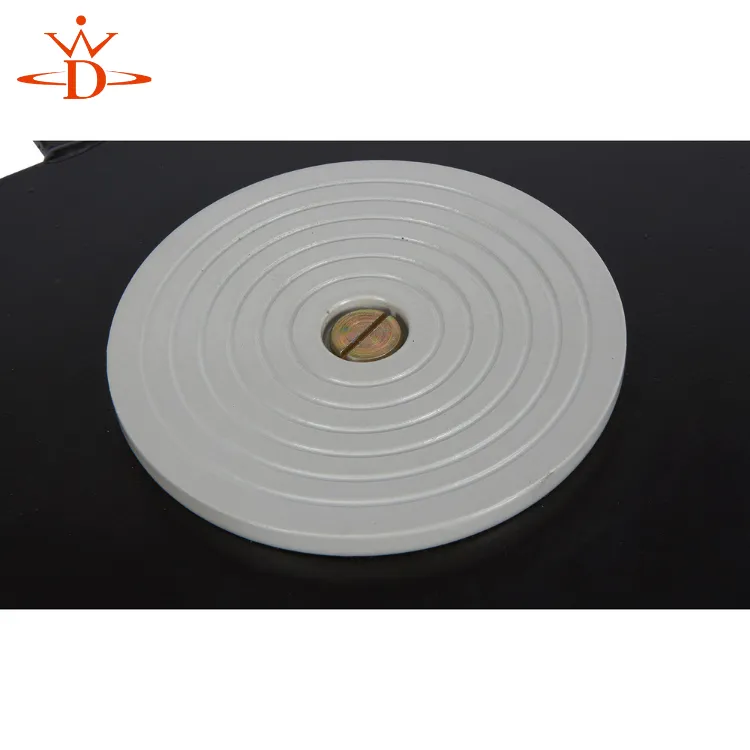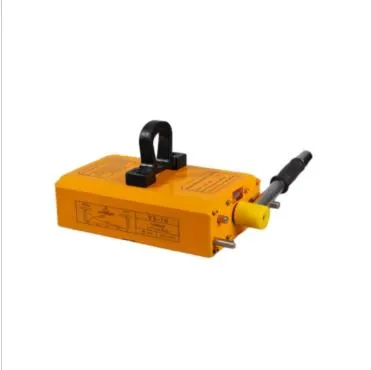Industrial 1 Ton Magnetic Lifter Heavy-Duty Safe Lifting
- Fundamentals of modern electromagnetic lifting solutions
- Technical advantages in performance and safety systems
- Comparative analysis across leading manufacturers
- Price considerations for varying industrial applications
- Custom engineering capabilities and specialized configurations
- Real-world implementation success stories
- Selecting the optimal magnetic handling solution

(magnetic lifter 1 ton)
Understanding Magnetic Lifter 1 Ton Capabilities
Industrial material handling requires precision equipment, with magnetic lifters providing crucial solutions for ferrous material transport. The 1 ton magnetic lifter category represents a versatile workhorse capable of lifting steel plates, machine parts, and structural components weighing up to 2,200 lbs (1,000 kg). Unlike traditional mechanical lifting devices, these units employ electromagnetic technology that creates immediate, secure contact with ferrous materials upon activation.
Standard industrial models feature safety factors between 3:1 and 5:1, ensuring operational integrity even at maximum capacity. When considering a magnetic lifter 1 ton
model, key specifications include duty cycle duration (typically 100% at 20°C ambient temperature), lifting face dimensions (commonly 6"×8" to 10"×12"), and power requirements (24V DC systems being prevalent). Industrial facilities implementing these systems report 25-40% faster material transfer cycles compared to sling-based solutions.
Performance Advantages of Modern Lifting Systems
Advanced 2 ton magnetic lifter models build upon core technology with engineered enhancements that increase both lifting capacity and operational safety. Modern electromagnetic lifting systems incorporate dual-coil technology that maintains adhesion even during power interruptions - a critical safety feature preventing catastrophic load drops. Power efficiency measures demonstrate significant improvement, with contemporary 5kW systems matching the lifting capacity that previously required 8kW units.
Key technical developments influencing performance include:
- Pulsed power technology reducing energy consumption by 35-40%
- Integrated load monitoring systems with ±0.5% measurement accuracy
- Temperature-controlled coils maintaining stable output from -10°C to 50°C
- Magnetic flux optimization achieving maximum material penetration at 80% rated energy input
Industry Manufacturer Comparison Analysis
Selecting appropriate magnetic lifting solutions requires evaluating technical specifications across multiple suppliers. The table below compares critical parameters for 1-ton and 2-ton lifting capacities across industry leaders:
| Brand | Model | Lifting Capacity | Max Steel Thickness | Power Consumption | Safety Factor | Weight |
|---|---|---|---|---|---|---|
| LiftTech | EM-1000 | 1 ton | 65 mm | 0.5 kW | 3:1 | 62 kg |
| MagnaSystems | MSP-2200 | 2 ton | 80 mm | 0.9 kW | 4:1 | 85 kg |
| MagniForce | MF-2T | 2 ton | 75 mm | 1.1 kW | 3.5:1 | 79 kg |
| ElectroLift | EL-1000X | 1 ton | 70 mm | 0.7 kW | 4:1 | 58 kg |
Performance testing reveals significant differences in duty cycle endurance, with premium models maintaining full lifting capacity through 500,000+ activation cycles versus economy units failing after approximately 200,000 cycles. Temperature performance also varies substantially, affecting suitability for foundry or cold storage applications.
Economic Considerations for Magnetic Lifter 1 Ton Price Factors
The magnetic lifter 1 ton price spectrum ranges from $2,500 to $6,800 depending on safety features, duty rating, and build quality. Industrial-grade units meeting CE and OSHA standards typically command 25-30% premiums over economy models, justified by redundant safety systems and documented reliability records. Analysis of lifetime operational economics indicates higher initial investments yield substantially lower cost-per-lift metrics over equipment service life.
Maintenance constitutes approximately 15% of total lifetime costs for premium models versus 22-28% for economy alternatives. When evaluating magnetic lifter 2 ton investment economics, consider that doubling capacity typically increases purchase price by 60-70% rather than 100%, making higher-capacity units more cost-efficient for frequent heavy applications.
Application-Specific Engineering Solutions
Custom magnetic lifter adaptations address specialized material handling challenges beyond standard product parameters. Engineering modifications include non-standard voltage systems (42V DC or 110V AC for shipyards), extreme-temperature formulations (preserving functionality from -40°C to 300°C), and non-rectangular lifting surfaces for curved materials.
Notable custom configuration examples:
- Explosion-proof designs meeting ATEX Zone 1 requirements
- Submersible units rated for continuous saltwater exposure
- Low-profile versions with just 35mm total height
- Segmented pad systems enabling independent section control
Engineering lead times for customized solutions average 6-8 weeks, with tooling investments amortized over production volumes to maintain economic viability.
Industrial Implementation Success Stories
Manufacturing case studies demonstrate practical applications where implementation generated measurable outcomes. A German automotive supplier integrated three 2-ton magnetic lifters into their stamping line, reducing part handling damage by 95% while increasing throughput by 40 parts per shift. The solution achieved 14-week ROI through eliminated sling replacements and reduced workplace injuries.
Construction applications revealed similarly significant benefits, with a bridge project shortening steel plate installation time by 3 hours daily using specialized electromagnetic lifting equipment. Project managers recorded no lost-time incidents in material handling operations throughout the 18-month project duration while saving $78,000 in crane rental costs through reduced operational time requirements.
Optimizing Your Magnetic Lifting Selection
Selecting the proper magnetic lifter 1 ton solution requires balancing application requirements with economic considerations. Evaluate material characteristics first - surface condition, curvature, and thickness affect achievable lifting force significantly. Operational environment factors including temperature extremes, regulatory constraints, and duty cycle intensity determine appropriate housing configurations and safety certifications.
Leading operators implement combination approaches utilizing both 1-ton units for precision positioning and 2 ton magnetic lifter systems for heavy structural components. This tiered approach maximizes both flexibility and throughput efficiency. Always conduct on-site material adhesion tests using representative samples before final equipment specification, as actual performance can vary up to 15% from catalog ratings depending on material characteristics.

(magnetic lifter 1 ton)
FAQS on magnetic lifter 1 ton
Q: What is the average price range for a 1 ton magnetic lifter?
A: The price typically ranges from $500 to $1500 USD, depending on the brand and features. Costs can include shipping or accessories, so shop around for competitive offers.
Q: How does a 1 ton magnetic lifter differ from a 2 ton model?
A: A 1 ton model lifts up to 1000kg for lighter tasks, while a 2 ton version handles 2000kg for heavier loads. The larger model may be bulkier and cost more, so match your choice to application needs.
Q: Where are 2 ton magnetic lifters typically utilized in industries?
A: These lifters are common in construction, manufacturing, and metalworking for moving steel plates or machinery. Ensure proper safety checks to prevent accidents during operation.
Q: Can a magnetic lifter handle irregular-shaped surfaces?
A: Magnetic lifters perform best on flat, smooth metal surfaces. Irregular shapes like rough edges may cause slipping, so test on sample pieces before full-scale lifting.
Q: What are the key safety features of a 1 ton magnetic lifter?
A: Standard safety includes handles, release mechanisms, and load indicators. Optional features like emergency stops add security; always follow manufacturer guidelines for safe use.
-
Dawei Hand Pallet Truck 1200mm, 2000–5000 KGS Heavy-DutyNewsNov.17,2025
-
Dawei Hand Pallet Truck, Fork Length 1200mm, 2000–5000kgNewsNov.17,2025
-
Large Equipment Movers – Safe, Insured & On-Time ServiceNewsNov.17,2025
-
Machine Moving Dollies | Heavy-Duty, Low-Profile, SafeNewsNov.17,2025
-
Permanent Lifting Magnet - Heavy-Duty, Safe, Quick ReleaseNewsNov.11,2025
-
PML 1000 Lifting Magnet - Heavy-Duty, Safe, No PowerNewsNov.11,2025
-
Large Equipment Movers: Safe, Fast, Certified ProsNewsNov.11,2025
